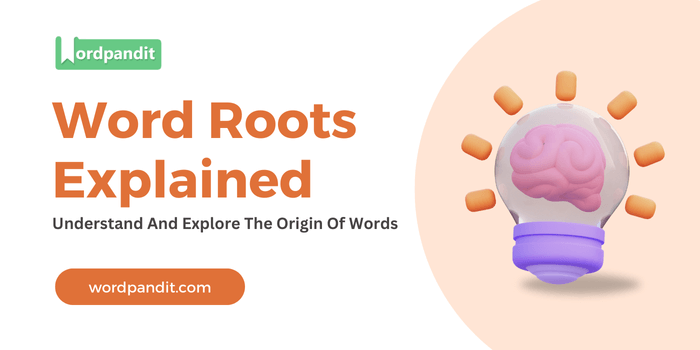Son: The Resonance of Sound in Language and Beyond
Discover the versatile and dynamic "Son" root, derived from the Latin word sonus, meaning "sound." From everyday terms like "sonic" to technical descriptors such as "resonant," this root echoes across disciplines, shaping the language of acoustics, communication, and art.
Table of Contents
- Introduction: The Essence of "Son"
- Etymology and Historical Journey
- Mnemonic: Unlocking the Power of "Son"
- Common "Son"-Related Terms
- "Son" Through Time
- "Son" in Specialized Fields
- Illustrative Story: "Son" in Action
- Cultural Significance of "Son"
- The "Son" Family Tree
- FAQs About the "Son" Word Root
- Test Your Knowledge: "Son" Word Root Quiz
- Conclusion: The Living Legacy of "Son"
Introduction: The Essence of "Son"
Imagine the soothing sound of waves or the echo of a voice in a cavern. These auditory experiences capture the essence of the root "Son", pronounced as sohn. Originating from Latin sonus (sound), this root permeates words that describe vibrations, tones, and resonances. It finds relevance in fields as diverse as music, technology, and physics, serving as a linguistic reminder of the power of sound in shaping our world.
Etymology and Historical Journey
The root "Son" traces its origins to the Latin sonus, meaning "sound." Early Latin literature celebrated sonus as an integral part of nature and communication, inspiring the creation of words that described musical instruments, vocal expressions, and auditory phenomena. Over centuries, as languages evolved, sonus became embedded in terms that reflect both natural and artificial sounds, from the "sonnet" of the Renaissance to "sonar" in modern technology.
Mnemonic: Unlocking the Power of "Son"
To remember the root "Son," visualize a symphony orchestra playing in perfect harmony. The rich, resonant sound surrounds you, illustrating the centrality of "Son" in creating auditory wonder.
Mnemonic Device:
“Son creates a symphony of sound, resonating through words and worlds.”
Common "Son"-Related Terms
- Sonic (soh-nik): Relating to sound, especially speed or frequency.
Example: "The jet broke the sound barrier with a sonic boom." - Resonant (rez-uh-nuhnt): Producing a deep, full, or reverberating sound.
Example: "Her voice was resonant, filling the auditorium effortlessly." - Sonar (soh-nar): A system for detecting objects underwater using sound waves.
Example: "The submarine relied on sonar to navigate through the depths." - Sonnet (son-it): A 14-line poem with a specific rhyming scheme, originally meant to be sung.
Example: "Shakespeare’s sonnets are masterpieces of poetic form." - Dissonance (dis-uh-nuhns): A lack of harmony between sounds or ideas.
Example: "The dissonance in the music mirrored the tension in the scene."
"Son" Through Time
- Sonnet (Renaissance): Initially associated with sung verses, sonnets evolved into a celebrated poetic form.
- Sonic Boom (Modern Era): A term coined in the 20th century, describing the sound produced when an object exceeds the speed of sound.
"Son" in Specialized Fields
- Physics:
Supersonic: Faster than the speed of sound, crucial in aerodynamics.
Example: "Supersonic jets revolutionized air travel." - Music:
Resonance: Amplification of sound in instruments or architectural spaces.
Example: "The violin’s resonance filled the concert hall." - Technology:
Sonography: Using sound waves to create images, commonly in medical diagnostics.
Example: "Ultrasound sonography helped monitor the baby’s growth." - Literature:
Sonnet: Poetry that uses sound to convey emotion and rhythm.
Example: "The sonnet's cadence mirrors the heartbeat of its themes."
Illustrative Story: "Son" in Action
In a bustling city, a young scientist named Ravi worked on improving sonar technology to map the ocean floor. He was inspired by his childhood memories of listening to his grandmother’s resonant voice narrating stories of ancient mariners. When his invention successfully detected previously unknown coral reefs, Ravi realized that the echoes of the past still resonate in today’s discoveries.
Cultural Significance of "Son"
From the rhythmic chants of ancient rituals to the sonic innovations of modern music, "Son" captures humanity’s connection to sound. Cultural practices like throat singing or orchestral compositions celebrate the harmonies and dissonances that shape our auditory experiences, emphasizing "Son’s" universal importance.
The "Son" Family Tree
- Phon (Greek: "sound"):
Telephone: A device for transmitting sound over distances.
Phonetics: The study of speech sounds. - Aud (Latin: "hear"):
Audible: Capable of being heard.
Audience: A group that listens or watches. - Voc (Latin: "voice"):
Vocalize: To produce sound with the voice.
Advocate: One who speaks on behalf of others.
FAQs About " Sol "
Q: What does the root "Son" mean?
A: The root "Son" means "sound" and is derived from the Latin word sonus. It is central to many words related to audio, resonance, and auditory phenomena. For example, "sonic" refers to something related to or involving sound, often used to describe speed (e.g., supersonic jets).
Q: How is "Resonance" used in both sound and metaphorically?
A: In physics, resonance refers to the amplification or prolongation of sound when an object vibrates at its natural frequency. Metaphorically, it describes an emotional or intellectual connection that deeply impacts someone. For instance, a story might "resonate" with readers because they relate to its themes.
Q: What is the origin of "Sonic"?
A: "Sonic" originates from the Latin sonus and describes phenomena related to sound. It is often used to discuss sound waves, speed relative to sound (e.g., supersonic), and even musical genres like "sonic rock."
Q: What does "Sonar" mean, and how does it work?
A: "Sonar" stands for Sound Navigation and Ranging. It works by emitting sound waves and detecting their echoes when they bounce off objects. This technology is crucial for underwater navigation, object detection, and mapping.
Q: What is the significance of a "Sonnet"?
A: A sonnet is a 14-line poem that traditionally follows a specific rhyme scheme and rhythmic pattern. The term originates from the Italian sonetto, meaning "little song," because sonnets were often sung or recited melodiously.
Q: What is "Dissonance," and how is it used in language and music?
A: Dissonance refers to a lack of harmony between sounds, creating tension or discord in music. In language, it describes conflicting ideas or elements, often used metaphorically in literature and art to represent contrasts or challenges.
Test Your Knowledge: " Sol " Mastery Quiz
1. What does the root "Son" signify?
2. Which word refers to a poem often sung or recited?
3. What does "Resonant" describe?
4. What technology uses sound for underwater navigation?
5. What is "Supersonic"?
Conclusion: The Everlasting Echo of "Son"
The root "Son" reverberates through language, science, and culture, echoing its timeless significance. From ancient chants to cutting-edge sonar, its legacy reminds us of the power of sound to connect, inspire, and innovate. Embrace the resonance of "Son" in your daily life, and let its vibrations guide you to new horizons.













